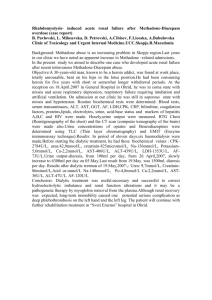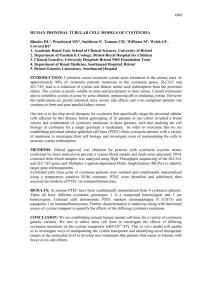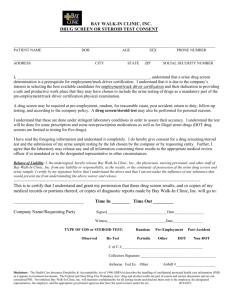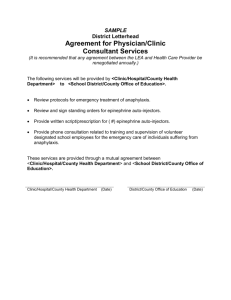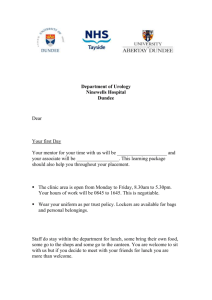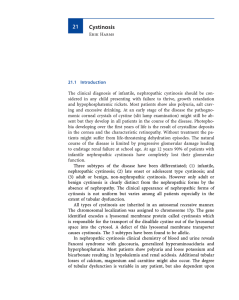Designing `patient centred care` for Cystinurics
advertisement
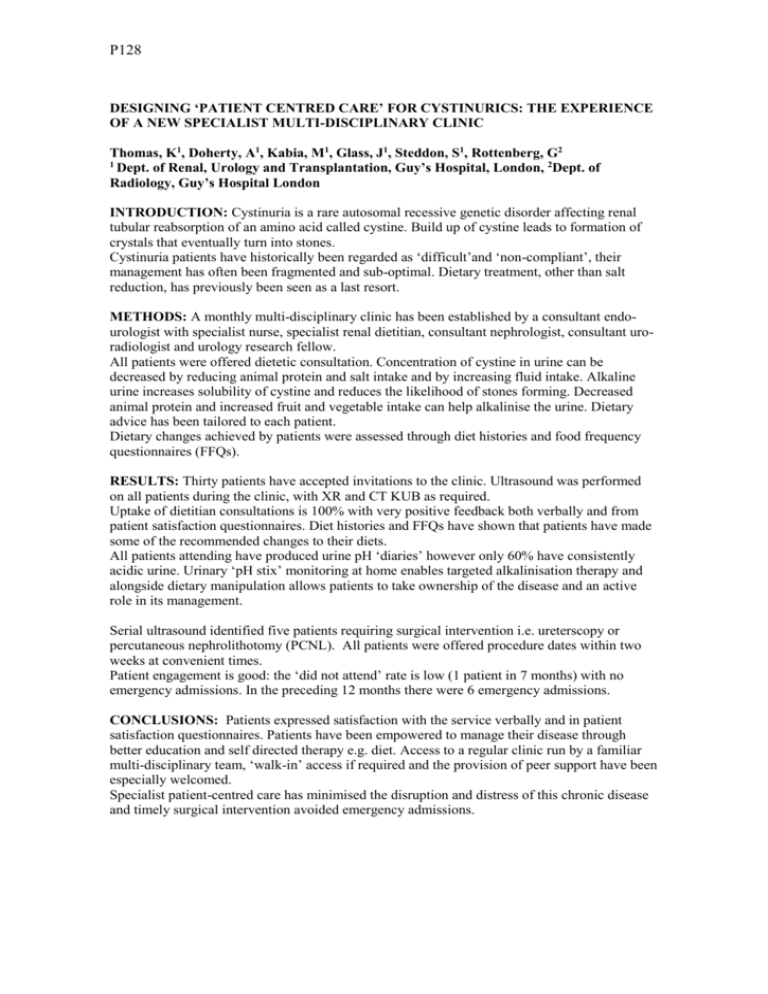
P128 DESIGNING ‘PATIENT CENTRED CARE’ FOR CYSTINURICS: THE EXPERIENCE OF A NEW SPECIALIST MULTI-DISCIPLINARY CLINIC Thomas, K1, Doherty, A1, Kabia, M1, Glass, J1, Steddon, S1, Rottenberg, G2 1 Dept. of Renal, Urology and Transplantation, Guy’s Hospital, London, 2Dept. of Radiology, Guy’s Hospital London INTRODUCTION: Cystinuria is a rare autosomal recessive genetic disorder affecting renal tubular reabsorption of an amino acid called cystine. Build up of cystine leads to formation of crystals that eventually turn into stones. Cystinuria patients have historically been regarded as ‘difficult’and ‘non-compliant’, their management has often been fragmented and sub-optimal. Dietary treatment, other than salt reduction, has previously been seen as a last resort. METHODS: A monthly multi-disciplinary clinic has been established by a consultant endourologist with specialist nurse, specialist renal dietitian, consultant nephrologist, consultant uroradiologist and urology research fellow. All patients were offered dietetic consultation. Concentration of cystine in urine can be decreased by reducing animal protein and salt intake and by increasing fluid intake. Alkaline urine increases solubility of cystine and reduces the likelihood of stones forming. Decreased animal protein and increased fruit and vegetable intake can help alkalinise the urine. Dietary advice has been tailored to each patient. Dietary changes achieved by patients were assessed through diet histories and food frequency questionnaires (FFQs). RESULTS: Thirty patients have accepted invitations to the clinic. Ultrasound was performed on all patients during the clinic, with XR and CT KUB as required. Uptake of dietitian consultations is 100% with very positive feedback both verbally and from patient satisfaction questionnaires. Diet histories and FFQs have shown that patients have made some of the recommended changes to their diets. All patients attending have produced urine pH ‘diaries’ however only 60% have consistently acidic urine. Urinary ‘pH stix’ monitoring at home enables targeted alkalinisation therapy and alongside dietary manipulation allows patients to take ownership of the disease and an active role in its management. Serial ultrasound identified five patients requiring surgical intervention i.e. ureterscopy or percutaneous nephrolithotomy (PCNL). All patients were offered procedure dates within two weeks at convenient times. Patient engagement is good: the ‘did not attend’ rate is low (1 patient in 7 months) with no emergency admissions. In the preceding 12 months there were 6 emergency admissions. CONCLUSIONS: Patients expressed satisfaction with the service verbally and in patient satisfaction questionnaires. Patients have been empowered to manage their disease through better education and self directed therapy e.g. diet. Access to a regular clinic run by a familiar multi-disciplinary team, ‘walk-in’ access if required and the provision of peer support have been especially welcomed. Specialist patient-centred care has minimised the disruption and distress of this chronic disease and timely surgical intervention avoided emergency admissions.



